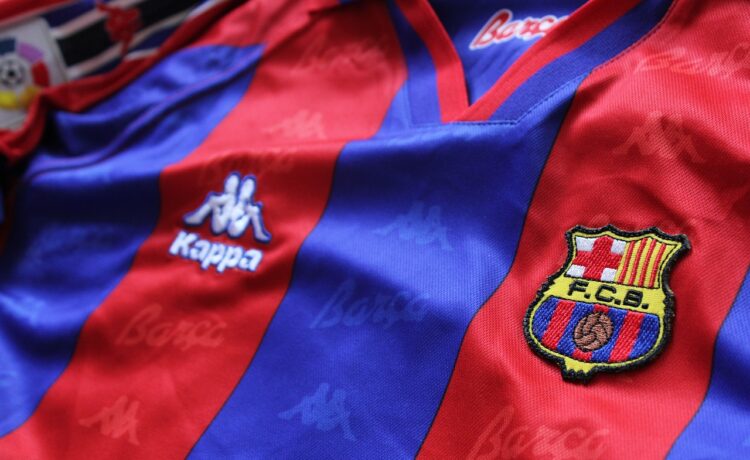The Spanish football landscape has witnessed many iconic rivalries, but few have been as intense and unpredictable as the clashes between Valencia CF and FC Barcelona. Over the years, these two clubs have faced off in some of the most thrilling, tactical, and high-stakes encounters in La Liga and beyond. While Barcelona has often dominated the Spanish footballing scene, Valencia has consistently been a club capable of disrupting the status quo, especially in their confrontations with the Catalan giants. This article delves deep into the lineups of alineaciones de valencia c. f. contra fútbol club barcelona analyzing how both teams’ tactical setups, individual performances, and key managerial decisions have shaped the course of this celebrated rivalry.
Introduction: The Rivalry Between alineaciones de valencia c. f. contra fútbol club barcelona
The encounters between Alineaciones De Valencia c. f. Contra Fútbol Club Barcelona have long been a spectacle for football fans, characterized by a fierce intensity and an underlying battle for supremacy in Spanish football. Both clubs are among Spain’s most prestigious, with rich histories of success and a legacy of producing some of the finest footballing talents. Yet, despite Barcelona’s dominance over the years, Valencia has often been a formidable opponent, capable of challenging their more illustrious rivals on any given day.
The historical context of this rivalry is deep-rooted. Valencia, founded in 1919, has won multiple La Liga titles, Copa del Rey trophies, and has consistently represented one of the strongest forces in Spanish football. Barcelona, on the other hand, is a club synonymous with success, both domestically and internationally, known for their tiki-taka playing style, their dominance in European football, and their ability to attract some of the world’s most talented players.
The Significance of Lineups in Football
In football, the lineup or alineación is not merely a list of players—it is the manager’s blueprint for how the game will unfold. It reveals the team’s tactical approach, the intended formation, and often, the mindset of the club heading into the match. Against a team like Barcelona, the lineup becomes crucial for a team like Valencia, who must manage both defensive solidity and offensive threat in a way that can neutralize Barcelona’s dominance.
The Role of Lineups in Shaping the Game
A manager’s selection of players often speaks volumes about how they intend to approach the game. For example, in matches between Valencia and Barcelona, Valencia’s managers have typically favored compact and disciplined formations that can disrupt Barcelona’s intricate passing game. With Barcelona’s penchant for high possession, having a well-organized defensive structure, often in formations like 4-4-2 or 4-2-3-1, has been a key part of Valencia’s strategy.
On the flip side, Barcelona’s formation usually revolves around a 4-3-3 or a 4-4-2, where they focus on maintaining possession and creating overloads in the midfield to break down opposing defenses. This tactical battle often plays out in the form of counter-attacking play from Valencia or sustained possession from Barcelona.
Key Players and Their Tactical Influence
Throughout the years, the lineups in these encounters have been shaped by world-class players capable of turning the game in a single moment. For Valencia, players like David Villa, Juan Mata, and Rodrigo Moreno have played pivotal roles in breaking down Barcelona’s defense, while Barcelona has relied on the genius of Lionel Messi, Xavi, Iniesta, and Luis Suárez to create opportunities and dominate possession.
The influence of key players is particularly evident in how these teams have shaped their tactics. For example, David Villa’s pace and finishing made him a deadly counter-attacking threat against Barcelona’s high defensive line, while Messi’s dribbling and vision allowed him to single-handedly dismantle Valencia’s defense. These players didn’t just contribute goals; they defined the tactical flow of these games.
Historical Context of alineaciones de valencia c. f. contra fútbol club barcelona
The head-to-head record between Valencia and Barcelona is rich with memorable moments. Over 150 meetings in various competitions, including La Liga, Copa del Rey, and Supercopa de España, have shaped this rivalry. While Barcelona has often emerged victorious in the overall series, Valencia’s resilience has shone through in numerous encounters.
Key Statistical Insights
- Total meetings: Over 150 competitive encounters.
- La Liga record: Barcelona has generally had the upper hand, but Valencia has shown on several occasions that they can upend the Catalan giants, particularly in the 2019/2020 season when they secured a 2-0 victory at Mestalla.
- Copa del Rey: One of the most iconic moments in this rivalry came in the 2008 Copa del Rey final, where Valencia defeated Barcelona 3-2. This victory remains one of Valencia’s finest moments in their history.
Notable Moments in History
Some of the most significant encounters between Valencia and Barcelona have taken place in high-stakes games, including the 2008 Copa del Rey final, where Valencia shocked Barcelona with a 3-2 win. David Villa was instrumental in this victory, scoring a key goal and playing a crucial role in Valencia’s counter-attacking strategy.
Tactical Overview of Lineups in Key Matches
In terms of tactics, the lineups of both teams in key encounters have provided an insightful look into how each manager has approached this historic rivalry.
Valencia’s Tactical Approach
In their battles against Barcelona, Valencia CF has historically favored a defensive, counter-attacking approach. When playing against a possession-dominant team like Barcelona, sitting deep and absorbing pressure before springing forward on the break has been a consistent strategy.
- 2008 Copa del Rey Final: Under Rafael Benítez, Valencia used a 4-4-2 formation, focusing on defensive discipline and quick counter-attacks. This setup frustrated Barcelona, who were unable to break through Valencia’s lines, with David Villa capitalizing on a Barcelona defensive lapse to score.
- 2017/2018 Season: Under Marcelino, Valencia adopted a more balanced approach. While still defending solidly, they pressed higher up the pitch at times to disrupt Barcelona’s build-up. This strategy earned them a valuable point in a 2-2 draw at Mestalla.
Barcelona’s Tactical Dominance
For FC Barcelona, the lineups in this rivalry have typically reflected their dominance in possession and attacking prowess. Barcelona’s use of the 4-3-3 formation has often been geared toward creating width and overwhelming opposition defenses with numbers in attack.
- Pep Guardiola’s Era: Barcelona’s dominant years under Guardiola were marked by tiki-taka, where possession was key. Players like Xavi, Iniesta, and Messi would pull the strings from the midfield, and Dani Alves and Jordi Alba provided width from the full-back positions, stretching the opposition.
- Luis Enrique’s Era: Under Luis Enrique, Barcelona retained much of their attacking flair but also added a more direct element to their play, with Luis Suárez and Neymar taking on more central roles in attack alongside Messi. This made their system even more unpredictable, and difficult for teams like Valencia to defend against.
Breakdown of Key Players in Valencia’s Lineups Against Barcelona
Valencia’s Key Players
- David Villa: One of the most important figures in this rivalry, David Villa was Valencia’s go-to forward for years, and his movement and finishing ability were critical in breaking down Barcelona’s defense. His pivotal goal in the 2008 Copa del Rey final is still remembered as one of the most important moments in the rivalry.
- Juan Mata: Mata, with his dribbling and passing vision, was an essential part of Valencia’s attacking force. His ability to link up play between midfield and attack was crucial in creating chances against Barcelona.
- Rodrigo Moreno and Santi Mina: In more recent years, Rodrigo and Mina provided Valencia with pace and directness in attack. Their runs in behind Barcelona’s high defensive line were critical to Valencia’s counter-attacking success.
Barcelona’s Key Players
- Lionel Messi: Undoubtedly the defining player in the history of this rivalry, Lionel Messi has tormented Valencia’s defense time and time again, contributing with goals, assists, and moments of individual brilliance. His ability to create and score in these encounters has been a key reason for Barcelona’s dominance.
- Xavi Hernández and Andrés Iniesta: The midfield duo were instrumental in dictating Barcelona’s play, especially during the Guardiola era. Their vision, passing range, and ability to control the tempo of the game often saw Barcelona comfortably control proceedings.
- Gerard Piqué: As one of the leaders in Barcelona’s defense, Piqué has had the difficult task of keeping Valencia’s fast attackers in check. His positioning and aerial ability have been key in shutting down many of Valencia’s counter-attacks.
Tactical Evolution and Trends
The Changing Styles of Play
The tactical approaches of both Valencia CF and FC Barcelona have evolved over time:
- Valencia has moved from a defensive, counter-attacking team under Benítez and Emery, to a more balanced and possession-oriented style under Marcelino, though against Barcelona, they often still revert to a more defensive approach.
- Barcelona has transitioned from tiki-taka under Guardiola, to a more direct and dynamic approach under Luis Enrique and Valverde. In recent seasons, under Xavi Hernández, Barcelona has tried to blend possession with direct attacking play.
Iconic Matches and Tactical Reviews
There have been several iconic matches in this rivalry:
- 2008 Copa del Rey Final: A tactical triumph for Valencia, as they frustrated Barcelona with disciplined defending and clinical finishing.
- 2019 La Liga: A memorable 2-0 victory for Valencia, where their defensive setup and quick transitions overwhelmed Barcelona at Mestalla.
These matches represent the different ways in which both teams have shaped their lineups and approached this rivalry, with Valencia showing tactical flexibility and Barcelona demonstrating their attacking flair.
Conclusion: alineaciones de valencia c. f. contra fútbol club barcelona
The rivalry between Alineaciones De Valencia c. f. Contra Fútbol Club Barcelona is a fixture that continues to excite football fans across the world. From tactical masterclasses to moments of individual brilliance, the lineups in this rivalry have constantly evolved, reflecting the changing dynamics of both teams. Whether it’s a defensive Valencia frustrating Barcelona’s attacking play, or Barcelona showcasing their mastery of possession, these encounters never fail to deliver drama and excitement.
Looking ahead, the rivalry promises to continue, with new generations of players bringing fresh dynamics to these encounters. One thing remains certain—whenever Valencia CF faces FC Barcelona, the footballing world will be watching, eagerly awaiting the next chapter in this legendary rivalry.













